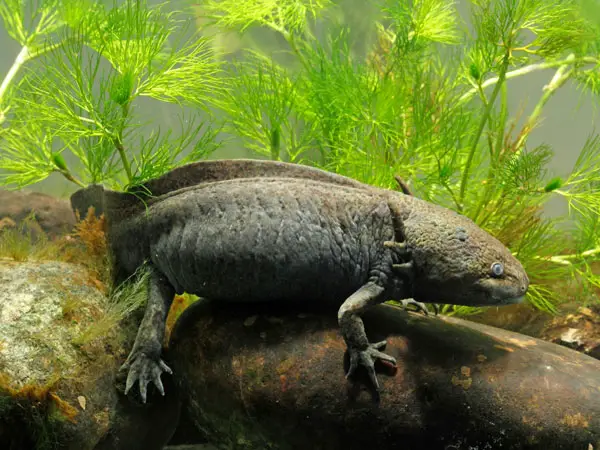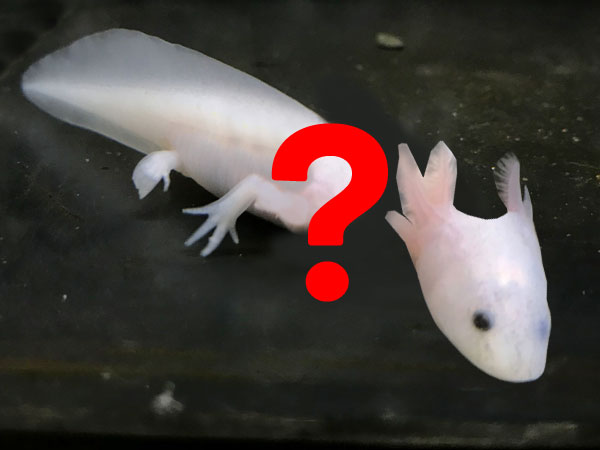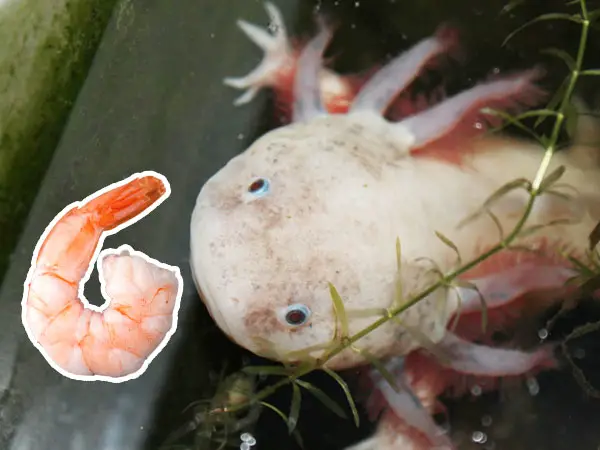Axolotls are considered endangered animals. The truth is that they are quite rare in the wild, and that’s why they have become even more endangered. Whether it’s because of the human intrusion, or because they are quite endangered by other species in their natural habitats, we have to protect them so that they don’t become extinct.

At the moment, they are not extinct in the wild. In captivity, axolotls are widely spread; however, in the wild, they are becoming rarer and rarer. The story behind their extinction in the nature is actually quite sad.
Their main natural habitat is in Mexico, in the swamp areas near Mexico City, which is, as you might know, one of the largest cities in the world. And because of the growing demands for water of the city, they have started draining the surrounding areas, which includes the habitats where axolotls live. This has led to their near-extinction.
They are also present in other areas in the world, but that’s one of their biggest habitats. Another possible reason for their endangered status is the presence of their predators, birds. They are also taken from the wild by people who want to sell them for profit, so they are becoming rarer and rarer.
Is there anything we can do to stop it?
Where Do Axolotls Live in the Wild?
Axolotls like to live in swampy areas of Central America but also in parts of North and South America. However, their main habitat is the lake of Xochimilco, which is one of the lakes around Mexico City. They live permanently in the water, unlike other salamanders that are found in the world.
And because of this quality, they are not able to survive without water for too long. In the past, they were found in several lakes in Central America; however, today they are only found in the lake of Xochimilco in the wild. They were also found in the Lake Chalco in the Valley of Mexico, but this lake doesn’t exist anymore due to flood control measures.
As Mexico City keeps growing and growing, the population of axolotls keeps dwindling every year. Because the city is using the lake as a source of fresh water. Also, there are plans to keep draining the lake to prevent floods, which can happen in the rainy seasons. This also means that axolotls are likely to keep being endangered and they might even go extinct in the future.
How Many Axolotls are Left in the World?
It is estimated that today, there are around 700-1200 axolotls left in the world, which is a very small number compared to what it used to be in the past.
It is believed that a few decades ago, there used to be sixty times more axolotls in the world, compared to today’s numbers. That’s a sad number, to be honest, because axolotls are becoming more and more extinct every year.
That’s because of several reasons, which we’ll outline later in the article.
Are Axolotls Going Extinct?
At the moment, axolotls are deemed as critically endangered. But if the trends of the last few years will continue, the future does not look good for axolotls in the wild.
While the numbers of axolotls in captivity are very large, there are not that many axolotls left in the world, which is a concern. Where they live in the surrounding areas of Mexico City, the living conditions are getting worse and worse, which happens almost every year.
The lake where they live is getting smaller and there’s not enough water to support the numbers that are inside the lake today. The city is draining the lake for its own usage.
But another massive concern is the quality of living conditions in the lake. Because of the large pollution that happens in the city, the lake is becoming more and more contaminated with radioactive materials and other harmful materials, which makes it a bad living area for axolotls.
The ozone layer is degrading, which causes young axolotls to be severely weakened, leading them to become more susceptible to being caught by various predators, while some of them also die because of the poor conditions in the wild.
It’s a really sad story, but unfortunately, there’s another piece of bad news. Non-native fish species are being introduced into the same lake where axolotls live, worsening their chances of survival. It seems as though the odds are stacked up against the survival of axolotls in the future.
What is Being Done to Save Axolotls?
Efforts are being done to save the axolotls, which is great news. Local people are joining the efforts to save this endemic animal and protect its future.
One of the efforts is to breed them in captivity and then release them into the habitat. Although many of them are also kept in captivity, there are some axolotls that are released back into the habitat, which could help the dwindling numbers to enforce breeding and larger numbers.
Another potential action that could save axolotls is the government’s efforts to help local farmers to use the ancient tradition of farming in the wetland structures, according to National Geographic. This can help the farmers create additional living areas for axolotls, which could solve part of the problem that the species is enduring.
These structures are called chinampas. However, it has been easier said than done, because people, especially young people, are not interested in the farming methods and are not interested to benefit axolotls, too.
Do Axolotls Die Easily?
No, axolotls are actually quite hardy animals. They will survive even in harsher conditions. They also have the regenerating ability as they are able to re-grow limbs they lose sometimes.
But the loss of habitat is a serious problem, which is not solved even by their hardy nature.
Conclusion
Axolotls are special animals, and they are becoming more and more extinct. Efforts are being done to save them, which might not be enough, unfortunately. We should do everything we can to save these beautiful animals.




